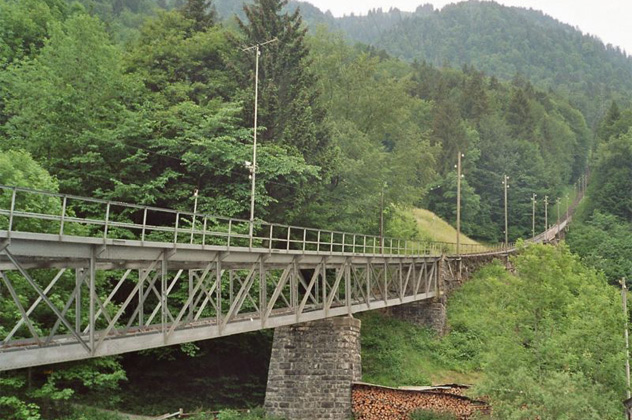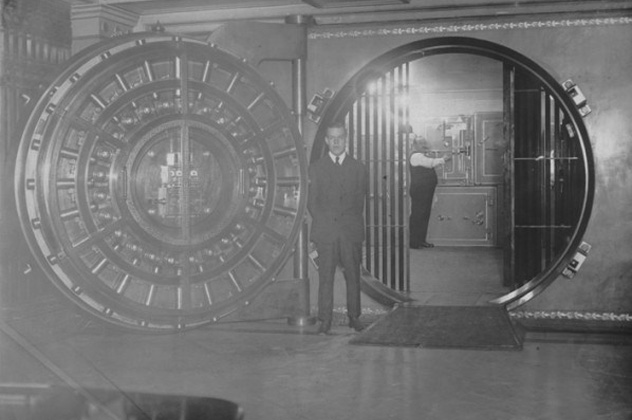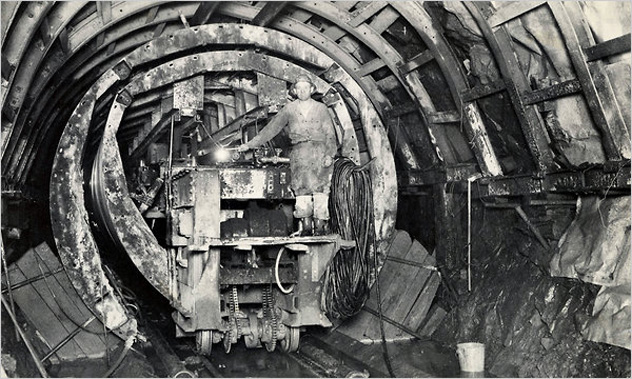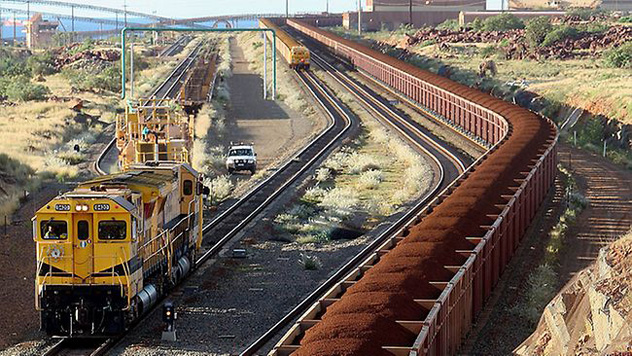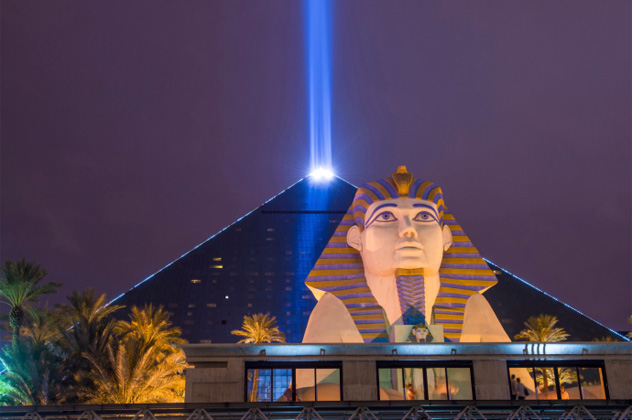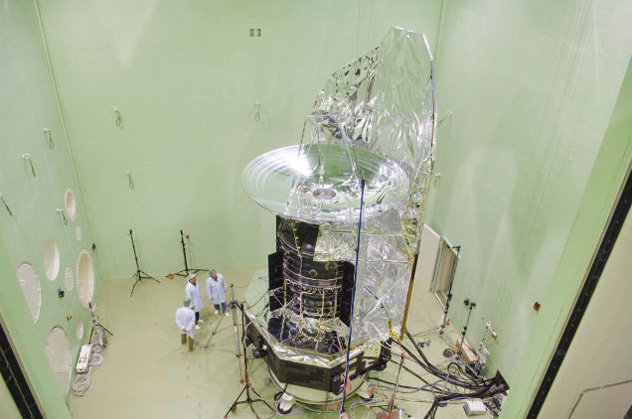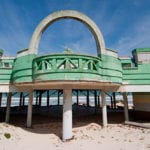So it might come as a surprise to learn that, from 1925 to 1936, French automobile manufacturer Citroen essentially utilized this extraordinary structure for the mundane task of advertising their brand. In fact, the very thing that saved the Eiffel Tower from demolition was its role as a radiotelegraph communications tower in World War I, hardly a glamorous occupation for one of the most romanticized structures in the world. Despite having a functional purpose, the Eiffel Tower still remains extraordinary, but what about things mankind has created that are ordinary, even mundane in their very creation and essence? Let’s take a look at 10 man-made things that are so extraordinary, they deserve to transcend their ordinary origins.
10The Niesenbahn Funicular Service Stairway
It would be fair to assume that the longest stairway in the word is in an extraordinarily tall building, but that title actually goes to the service stairway running alongside the Niesenbahn Funicular railway near Spiez, Switzerland. At 11,674 steps, it claims the Guinness World Record for longest staircase in the world. To put 11,674 steps into more relatable terms, the stairway covers a distance of 3.5 kilometers (2.2 mi) and rises 1,669 meters (5,476 ft) in elevation along that distance. Before you enthusiastically venture out to conquer this Everest of stairways, you must first register to do so. It’s only open to workers, excluding the annual stairway run—in which you can pay to run on stairs for over an hour. Admittedly, that sounds terrible, but since it’s in Switzerland the views are probably gorgeous.
9The Cleveland Federal Reserve’s Vault Door
From its installation in 1923 to its retirement in 1996, the 1.5-meter-thick (5 ft) door at the Federal Reserve of Cleveland served as the largest vault door installation in the world. At a weight of 100 tons, the swinging section of the door alone is akin to the weight of a Boeing 757 before fueling and loading, and its 5.5-meter (18 ft) hinge adds an additional 47 tons to the total weight. Yet it’s so perfectly balanced that one person can open and shut it with ease. The door is so large and heavy that, when the time came to transport it to Cleveland, Ohio from York, Pennsylvania, the largest railcar in the United States was required to carry it, and the route had to be carefully planned to avoid bridges, because the sheer weight of the cargo threatened to collapse anything that wasn’t solid Earth. Once the car arrived in Cleveland, it took two full days just to unload the door from the railcar. No crane existed that was strong enough to lift it, so massive hydraulic jacks were used instead. If that wasn’t enough, once unloaded from the railcar, it took a total of four days to travel from the rail station to the bank, a distance of merely 1.6 kilometers (1 mi).
8Wartsila-Sulzer RTA96-C
The world’s longest ship, Emma Maersk, is astounding in its own right, with a size comparable to the height of the world’s tallest skyscrapers at 397 meters (1,302 feet). It’s been the record holder for the world’s longest ship since 2007, but it’s the heart of this mighty beast that’s truly staggering. It’s befitting that the longest ship on the planet be powered by the largest reciprocating engine in the world—the Wartsila-Sulzer RTA96-C, an engine roughly the size of a small three-story apartment building. Without getting too technical, an engine of this size generates 110,000 horsepower and weighs 2,500 tons; compare that to the average horsepower and weight of an automobile engine at 150 horsepower and 160 kilograms (350 lb). Despite being so immense, the Wartsila-Sulzer RTA96-C is incredibly efficient, but nonetheless it still consumes 39.5 barrels of fuel every hour and costs $46 a minute to run.
7The Delaware Aqueduct
Many of us reading this have the luxury of instant access to clean water in the comfort of our homes, but we usually don’t think of the unseen engineering marvels put in place so we can do something so simple as fill a glass of water. Most modern cites aren’t blessed with the foresight of the founders to settle near an adequate water supply, and New York City is one of them. Early settlers dug the first permanent well in 1677, and the first reservoir delivered water to 22,000 residents via hollow logs nearly 100 years later in 1776. Aqueducts became the solution to New York’s growing population and their increasing thirst all the way up until 1944, when the Delaware Aqueduct was constructed. As of today, it still delivers 50 percent of the metropolis’s drinking water. At 137 kilometers (85 mi) long, it is the world’s longest continuous tunnel, and its deepest point lies 450 meters (1,500 ft) underground—nothing short of incredible, considering that it was constructed by drilling and blasting through solid rock. The aqueduct is also incredibly efficient—95 percent of its water is delivered by gravity alone, which is no small feat considering it delivers 1.9 billion liters (500 million gal) of water per day. Unfortunately, the fact that it leaks up to 130 million liters (35 million gal) of water daily—and has been since 1988—makes it one of New York’s biggest current problems. Plans are underway to spend $1.2 billion on diversion tunnels by 2019.
6KVLY-TV Television Mast
Before Dubai’s Burj Khalifa was built in 2010, the record for the world’s tallest man-made structure belonged to the KVLY-TV antenna in North Dakota. It took just 33 days and 11 men to assemble the antenna to a dizzying height of 628.8 meters (2,063 ft). The tower is so tall that if one of those 11 workers dropped his wrench at the top, it would be traveling at 400 kilometers per hour (250 mph) by the time it reached the ground—fast enough to ruin your day in a hurry if it happened to land on your toes. If you’re feeling brave, there’s a small, two-man service elevator that takes you 594 meters (1,950 ft) up the tower, but the last 275 meters (900 ft) or so—the actual antenna—are only accessible by climbing. The gusts up there can reach 112 kilometers per hour (70 mph) and the tower sways up to 3 meters (10 ft), so maybe it’s best just to visit the Burj Khalifa’s air-conditioned observation deck instead.
5The Australian BHP Iron Ore Train
How would you like to be stuck behind a train that is 7.3 kilometers (4.6 mi) long? While it might not seem that impressive at first glance, know that the amount of cars in this record-breaking run was a staggering 682 cars with a combined weight approaching 100,000 tons, making it both the longest and heaviest train to ever move. This becomes even more impressive when you learn that the entire train was under the control of a single driver harnessing the power of eight massive General Electric Diesel locomotives spaced evenly throughout the train to increase traction and braking forces. BHP Iron Ore is no stranger to long trains, however, and routinely operates trains at half this size, meaning that they are regularly the largest trains on the planet at any given time. If you ever find yourself blocked at a railroad crossing by one of these beasts, it might be best to just head back the way you came.
4The Luxor Sky Beam
No matter how common lightbulbs are these days, it’s hard to overlook the light mounted on top of the Luxor Hotel in Las Vegas. This light is the second brightest man-made light in the world. While its setting is anything but ordinary, there’s no trickery or magic behind the “sky beam,” as it’s called in Las Vegas. It uses 39 xenon-powered lamps and the aid of simple reflector shields. Granted, these aren’t your average consumer-grade lightbulbs, as each one costs a hefty $1,200 and uses 7,000 watts. When combined as a unit, they make 40 billion candlepower. It’s so bright that it has reportedly been seen at night by airline pilots 430 kilometers (270 mi) away in Los Angeles, and the air temperature around the lamps reaches 260 degrees Celsius (500 °F). This might sound impressive, but the world’s brightest light used to be even brighter when it was first installed in the 1990s. The hotel once claimed that American astronaut Daniel Brandenstein remarked that the light was so bright that it would awaken his comrades on the space shuttle. While that story was revealed to be a hoax, the Luxor sky beam is still powerful enough to use as a navigational landmark, as more than a few Las Vegas residents have admitted to doing.
3Large European Acoustic Facility
The Large European Acoustic Facility (LEAF) is so loud it can kill you. Glossing over how the scientists behind it found that out, let’s try to put one of the world’s most powerful artificial sound systems in more relatable terms. At its base, the LEAF isn’t much more than a juiced-up sound system pumping sound waves into an acoustically optimized room, similar to a loud stereo system playing into a hard-walled closet. The only difference is, the room is 15 meters (50 ft) tall and the system is fueled by nitrogen to produce sounds just 40 decibels quieter than a TNT bomb. The device is used to test whether satellites and other electronics can withstand the decibels produced at takeoff. As some of the loudest man-made sounds on the planet, rocket blasts sometimes damage the sensitive equipment being launched into space. And yes, the LEAF can kill you—because of this, the designers engineered a fail-safe that doesn’t allow the system to be turned on unless the door is closed.
2The Aerium
Businesses fail all the time, and the more ambitious ones usually leave behind large facilities in their wake. Unfortunately, it’s much easier to sell a standard office building than it is to sell, say, an aircraft hangar 210 meters (688 ft) wide and 107 meters (350 ft) high. That’s the predicament German airship company CargoLifter AG found itself in in 2002 when they declared insolvency. Fortunately for tourists in Europe, the Malaysian company Tanjong had the extravagant plan to convert the world’s largest freestanding building into an indoor water park and resort. The result is nothing short of astounding. While the structure is nothing more than a clever aircraft hangar, and the resort is standard fare for tourists and business moguls alike, the two combine to create one of the most fascinatingly odd man-made attractions in the world. Just how big is the world’s largest freestanding building? The Aerium can fit the Statue of Liberty standing up or the Eiffel Tower lying on its side; the floor space alone can fit eight American football fields. With all that space available, it’s barely surprising to learn that it holds a 2,700-square-meter (9,000 sq ft) pool with 180 meters (600 ft) of sandy shoreline. It also contains the world’s largest indoor rainforest with 50,000 trees.
1SEA-ME-WE-3
Submarine telecommunication cables are the unsung heroes when it comes to connecting the world. It seems that in our modern age of increasingly advanced technology and rapid development, the majority of communications would be delivered via satellites, but the reality is that most of our data circumnavigates the globe the same way our computers connected to the Internet 10 years ago—with really long cables. Most people don’t even know they exist, and SEA-ME-WE-3 is the world’s longest at a staggering 39,000 kilometers (24,233 mi). Completed in 2000, the cable runs from England to Australia and has 39 landing points in 33 countries and four continents. What’s even more incredible than the sheer scale is how mundane and simple these cables are. Modern submarine fiber optic cables like SEA-ME-WE-3 are little more than 6.8 centimeters (2.7 in) in diameter, which accounts for a rubber shell, protective synthetic bedding, copper insulation, and the optical fibers themselves. The difference between your household Ethernet cords and submarine fiber optic cables isn’t that great in principle, and everyone who’s had a data cord break on them knows how frustrating it can be. As it turns out, this exact thing can happen to data cables as well. A miscalculation by a ship’s navigator or even a curious sea creature can sever a cable, resulting in millions of users without Internet access. Even the mighty SEA-ME-WE-3 isn’t immune to the risks—this exact thing happened in 2005, resulting in Pakistan essentially being isolated from the rest of the world for weeks. Patrick Fuller is a university student studying industrial design who is fascinated by incredible man-made things.
